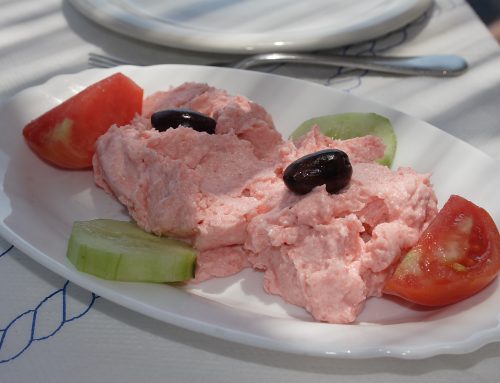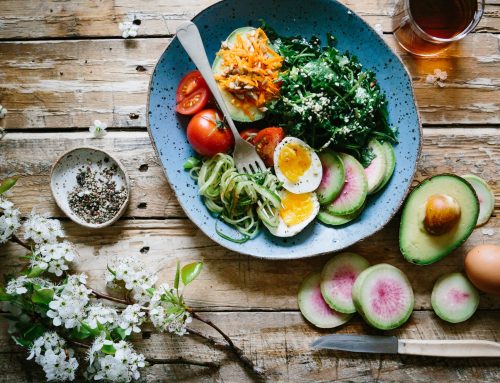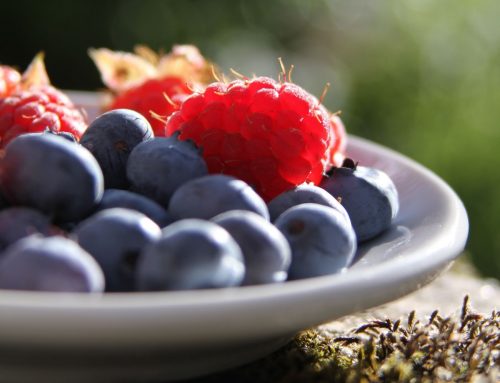Blood pressure refers to the force of your blood as it moves through the blood vessel walls of the body. A normal blood pressure for most people is around 120/80 millimeters of mercury, or mm Hg.
Systolic, or the measurement on top, refers to the force of the blood pumped out of the heart and into the arteries. Diastolic, the measurement on the bottom, refers to the pressure as the heart relaxes between beats. The American Academy of Cardiology and the American Heart Association currently consider high blood pressure – also called hypertension – to be anything above 130/80.
High blood pressure can be bad for your health for many different reasons:
- It can cause damage to the arteries in your kidneys so they don’t work properly.
- It can damage blood vessels in your eyes, leading to vision problems.
- Hypertension can raise your risk for heart failure.
- It raises the risk of a stroke, which is when a part of your brain doesn’t get adequate blood supply.
- It’s associated with a higher risk of sexual problems in both men and women.
Changing Your Diet to Help Lower Blood Pressure
Diet is one risk factor for high blood pressure that you can help control. For one, high sodium intake is associated with high blood pressure. Most American adults eat more than 3,400 mg of sodium a day, although the AHA recommends no more than 2,300 mg of sodium daily, says Grace Derocha, a registered dietitian with Blue Cross Blue Shield of Michigan. For some adults, no more than 1,000 to 1,500 mg of sodium a day is even better.
Processed foods such as cold cuts, canned foods and frozen dinners push the sodium count sky high for many Americans, says Julie Brennan, an associate professor and registered dietitian with The University of Toledo College of Medicine and Life Sciences in Toledo, Ohio.
The role of diet to control high blood pressure is so important that there is an eating plan called the Dietary Approaches to Stop Hypertension – or DASH – diet that can lower your systolic blood pressure (the top number) by 8 to 14 mm Hg over time, says Dr. Icilma V. Fergus, a cardiologist and associate professor of medicine at the Icahn School of Medicine at Mount Sinai and director of the Mount Sinai Heart Center for Cardiovascular Disparities in New York City.
The DASH diet focuses on:
- Fruits.
- Vegetables.
- Low-fat dairy.
- Lean protein.
- Whole grains.
These foods are usually higher in fiber and potassium, as well as other vitamins and minerals, all of which can help lower your blood pressure. One mineral, potassium, helps your body to get rid of blood pressure-raising sodium. Additionally, fiber helps to fill you up so you probably won’t eat as much, Fergus says.
Whether or not you follow DASH, you may want to know some specific foods to eat that can help lower your blood pressure.
These seven foods are a great place to start, as they are rich in potassium and fiber:
- Avocados.
- Beans.
- Berries.
- Beets.
- Dark, leafy greens.
- Sweet potatoes.
- Watermelon.
7 Foods That Help Lower Your Blood Pressure
1. Avocados
One-half of an avocado has 487 mg of potassium, which helps to meet a recommended daily intake of 2,600 to 3,400 mg. That half of an avocado also has a little over two grams of fiber and healthy fats. Here are some ways to use avocados when prepping meals:
- Make guacamole.
- Make avocado toast.
- Add avocado to salads.
- Add it to salsas.
- Put it in smoothies.
2. Beans
Beans are high in fiber and protein. There are many beans to choose from, from kidney beans to white beans to chickpeas and more. You can experiment to find which ones you like best. Beans are rich in potassium: A cup of white beans, for example, has 829 mg of potassium, Derocha says.
Here are a few ways you can add more beans to your diet:
- Make hummus with your favorite type of bean.
- Add beans to salads.
- Make black bean brownies. Have friends and family guess the secret ingredient in this fudge-like treat.
- Include beans in chili, soups and stews.
Tip: Rinse canned beans to help get rid of their excess salt, Brennan advises.
3. Beets
When’s the last time you ate beets? This deep-red vegetable is full of health benefits, including the potential to lower your blood pressure. Per a one-cup serving, beets have almost 4 grams of fiber. That fiber will make you less likely to fill up on processed foods and allow for better waste elimination from your body, Fergus says. Here are a few different ways to incorporate beets into your diet:
- Add beets to salads or make salads that focus on beets as the main ingredient.
- Put cut-up beets in soups.
- Make a beet hummus.
- Prepare tasty roasted beets.
4. Berries
Blackberries, blueberries, raspberries and strawberries are high in fiber and full of antioxidants, which help fight aging, says Dr. Nicole M. Weinberg, a cardiologist with Providence Saint John’s Health Center in Santa Monica, California.
Berries also can help reduce blood pressure. Here are a few ways to incorporate berries into your daily meals:
- Add them to salads or make your own berry salad.
- Include them in low-sugar fruit crisps.
- Make smoothies with berries.
5. Dark, Leafy Greens
Your mom was on to something when she told you to eat your greens as a kid. In particular, dark, leafy greens like kale and spinach are chock full of fiber, healthy vitamins and minerals such as potassium. If you’re not sure how you prefer to eat greens, there are many ways you can prepare them:
- Use them in salads.
- Add them to smoothies.
- Prep pasta dishes that include dark, leafy greens. Or mix them into the sauce.
- Blanch, broil, boil, saute or steam your greens.
Don’t overcook your greens to the point of destroying their nutrients, Fergus says.
6. Sweet Potatoes
The versatile sweet potato has 541 mg of potassium and nearly four grams of fiber. Here are several different ways to prep sweet potatoes so you can add them to your daily meals:
- Mash sweet potatoes together with mashed carrots.
- Add sweet potatoes to potato hash.
- Slice and roast them with a little olive oil and rosemary.
7. Watermelon
Watermelon isn’t just a refreshing, natural treat. It’s also low calorie and high in potassium, packing in 640 mg per each two-cup serving. Although watermelon tastes great simply as a snack, there are other ways you can get creative with it:
- Add watermelon to salads.
- Try grilling it.
- Freeze it to serve watermelon cubes as a frozen treat.
- Add watermelon to smoothies.
Some Final Recommendations
In addition to dietary changes, don’t forget to do the following to help lower your blood pressure more effectively:
- Get seven to eight hours of sleep a night.
- Avoid smoking.
- Keep alcohol consumption to a minimum.
- Lose weight if needed. For every 2.2 pounds of weight you lose, you can help lower your blood pressure by 1 mm Hg, Derocha says.
- Get regular physical activity.
Source: US News





